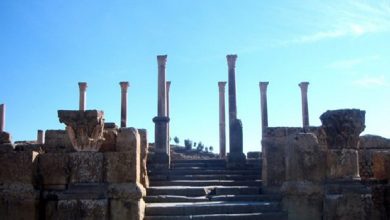Paracas skulls: Mysteries of the culture of Paracas

An archaeologist, in a careful study of the Paracas culture, discovered a unique find. This ancient culture of Paracs existed in the 4th-3rd century B.C., and it was located in southern Peru. The archaeologist found a large necropolis containing about 300 burials, each of which was at least 3,000 years old. But more than that, the scientist was struck by some of the unique find features.
Most of the skulls had a strange, unusual shape. Studies have proven that the graves do not belong to humans, and it is worth understanding what archaeologists have found.
Unique ancient graves
Scientists have found strange skulls in different places, including Mexico, Syria, and Egypt, and the unnatural elongation was explained after the discovery of an infant mummy. Planks were pressed tightly against his head.

This particular custom, which causes the skull to deform, is still performed by some people but in this case, scientists were confused not only by the shape of the head but also by its volume and weight. The specimens found were 25% larger in volume than the average, and the brains were half as heavy.
For a long time, scientists didn’t comment on the remains found. They could not explain why the discovered skulls were so different from human skulls but attempt to unravel the mystery were constantly being made.
DNA analysis of the eggheads
The archaeologist named Juan Navarro, who discovered the remains, kept them in his own museum. He allowed five of the 35 skulls to have samples of material, including hair, tissue, and teeth, to be analyzed for DNA. The investigators were not told what material they would be working with to keep the results unbiased.
The reports received indicated that the samples contained DNA with mutations not previously found in humans or primates. Based on the conclusion issued by the scientists, it can be concluded that the remains found are not human and did not originate from apes.
It is believed that even if the species found was in contact with humans, it was not possible to produce offspring in a mixed union.
Skull features
The key difference between the skulls found and the normal, human skull was their unnaturally elongated shape. It has previously been noted that there was a custom where at birth, the head was firmly tied to the planks on both sides, and as a result of the individual’s growth, there was a skull deformation.

So it was not so much the shape of the found remains that struck scientists but their weight and volume. The brain was heavier, and its volume was greater than that of a human. It is impossible to achieve such indicators by deliberate deformation.
The researchers completely excluded the variants connected with mutation or “mistakes” of nature. All the earlier studies have led to the conclusion that more than 3000 years ago in southern Peru lived tribes that included creatures not related to humans, although they looked like them.
Existing hypotheses
Findings and research have led scientists to wonder what these creatures might have been and where they came from. There is no exact answer, but there are several hypotheses to explain the strangeness of the remains.
Among the theories:
- They are representatives of another intelligent race that was on the planet at the same time as normal humans.
- A colony of beings from another planet tried to settle on Earth but failed.
Whoever these creatures were, they did not manage to stay on the planet for a long time, so their species simply died out. There is a version that representatives of this race still live somewhere in remote places and try not to contact people. But this version is unlikely.

Similar finds in Antarctica
A team of archaeologists in Antarctica has found three skulls that look like members of the Paracas culture. Until now, scientists have not found human remains on the continent, and exact explanations for the unusual find have not yet been found.
The remains found are not representative of a mutation or deformity. These creatures did exist, but it is unknown whether they were representatives of another race or came from another planet. The conducted studies allow only to note that they had nothing in common with human DNA. Let’s wait for the conclusions of “authoritative” scientists.




